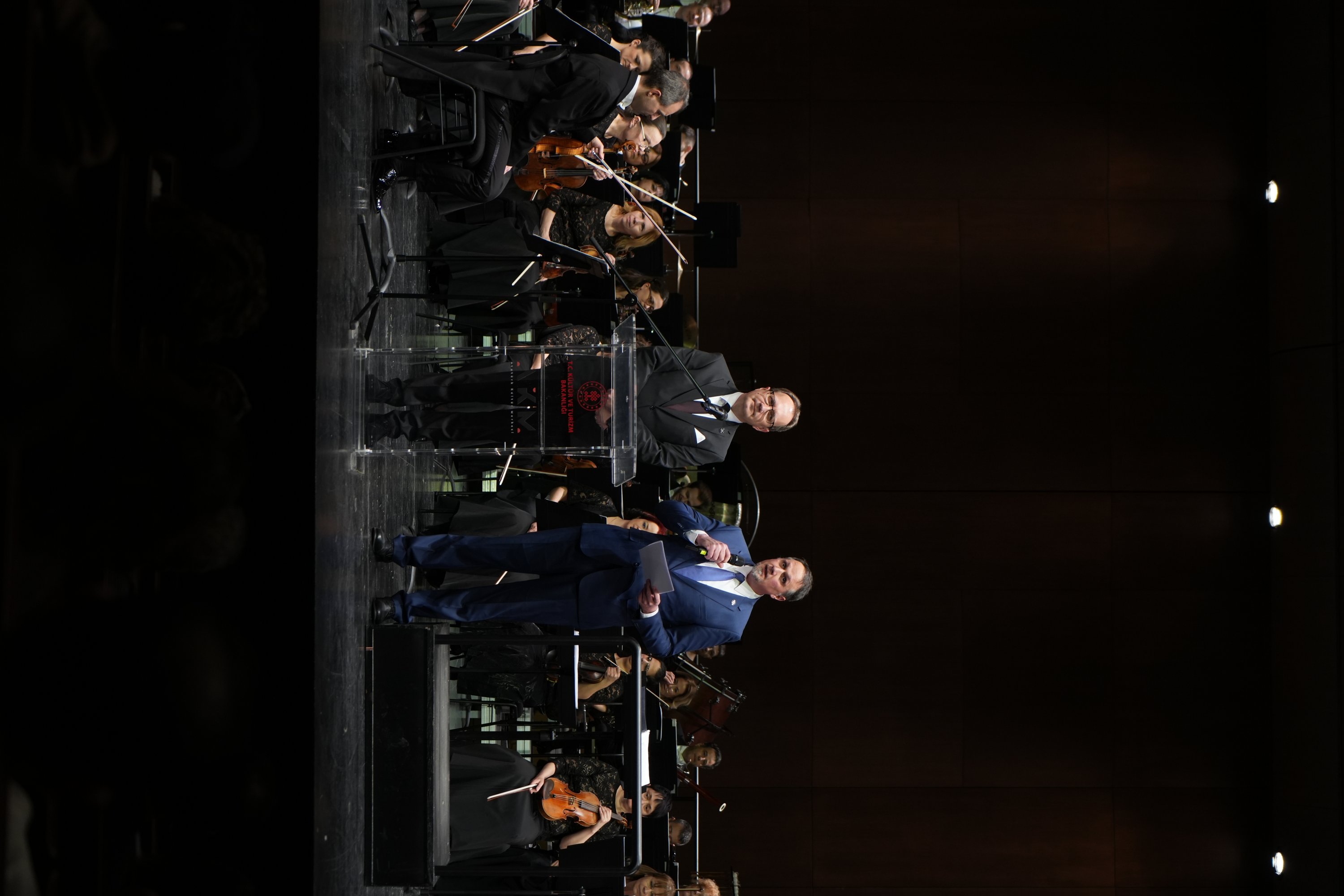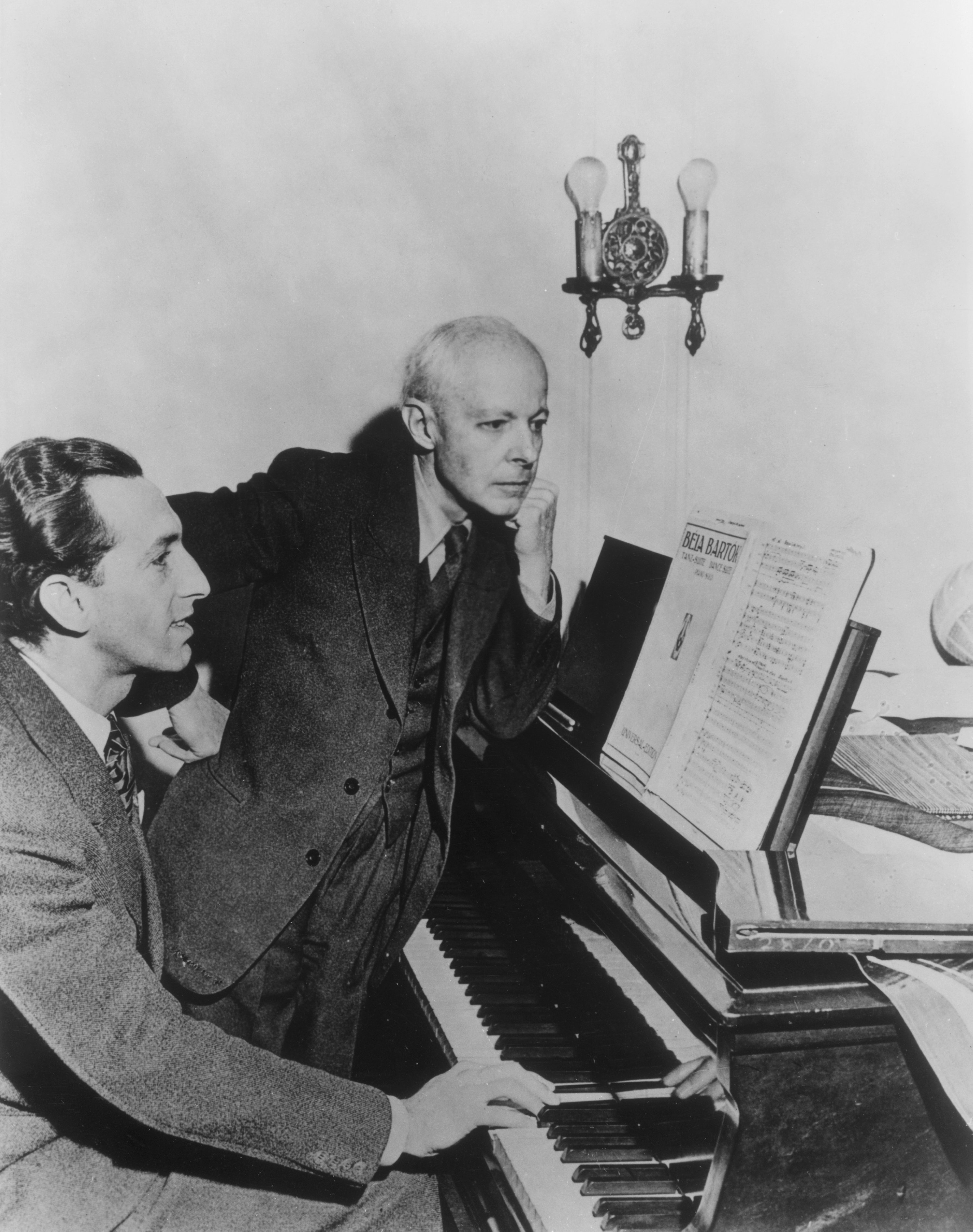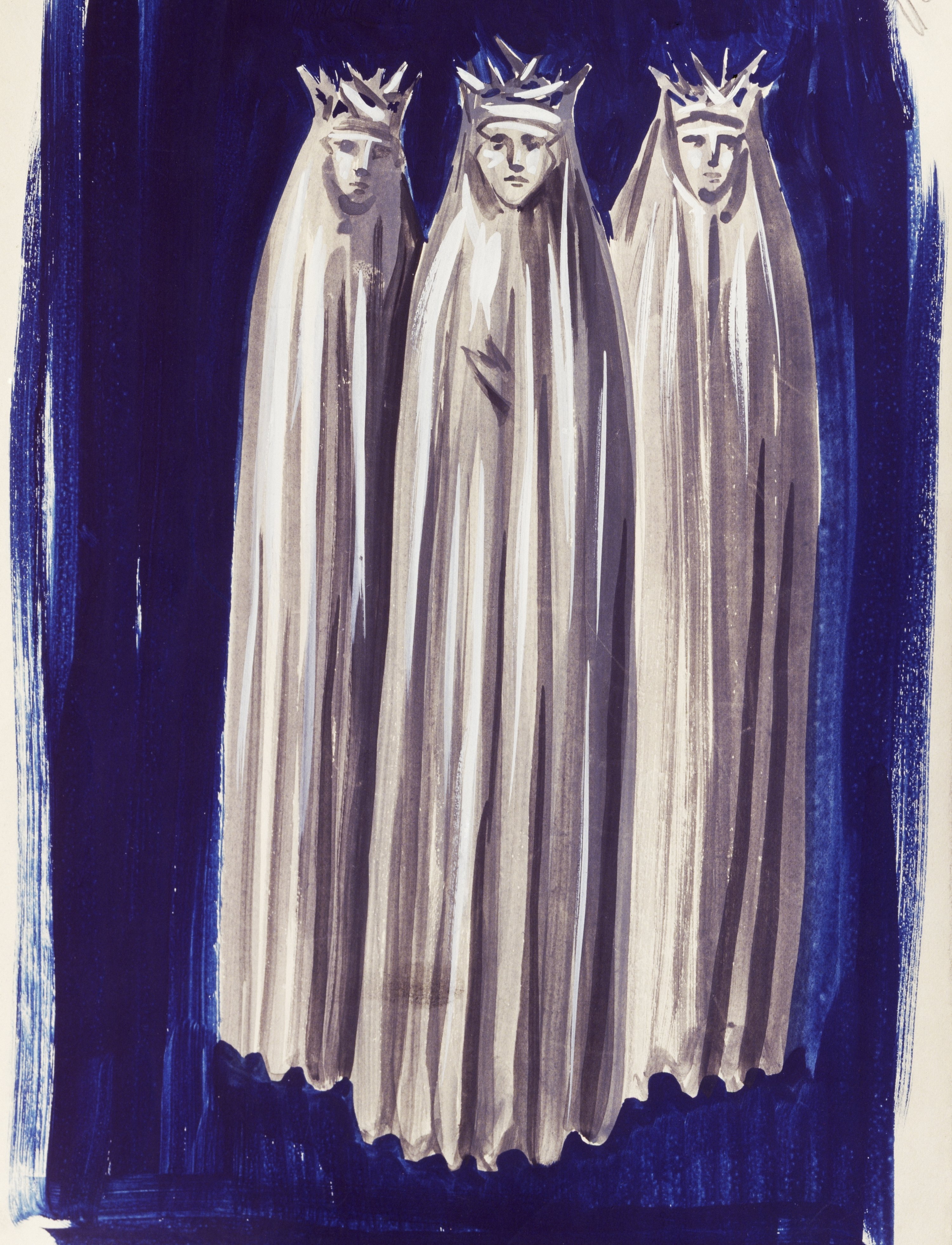© Turkuvaz Haberleşme ve Yayıncılık 2024
In an inauguration on Sunday evening, the curtain rose on the "2024 Hungarian-Turkish Cultural Year" at Istanbul's grand Atatürk Cultural Center (AKM) with a dazzling concert presented by the renowned Pannon Philharmonic, a symphony orchestra in the Hungarian picturesque city of Pecs. This cultural initiative, marking the centennial of the friendship agreement between Türkiye and Hungary, promises a yearlong spectacle of shared heritage and collaborative artistic endeavors.
Simultaneously, the opening of the exhibition titled "Hungarians in the Construction of Turkey" drew attention to the deep connection between the two nations. Showcasing the historical ties between Hungarian culture, considered the closest to Turks in Europe, and the Republic of Türkiye since its establishment, the exhibition highlighted the close collaboration between Mustafa Kemal Atatürk, the founder of the republic, and his Hungarian counterparts. Narrating the contributions of Hungarian experts in various fields such as architecture, music, engineering and agriculture during the early years of the Republic of Türkiye, the exhibition is curated via collaboration between the Hungarian National Museum and the Liszt Institute Hungarian Cultural Center in Istanbul.
Also, Peter Hoppal, who is the State Secretary for Culture and deputy in the Parliamentary Assembly of the Council of Europe, spoke during the inauguration, celebrating the connected ties between the two nations.

Undoubtedly, the night was stamped by an incredible performance from one of Hungary's elite ensembles, the Pannon Philharmonic. Conducted by Gergely Kesselyak, the concert was divided into two parts, the first part featured Zoltan Kodaly's "Dances of Galanta" inspired by the music of the town of Galanta, historically part of Hungary and now part of Slovakia, which is also the hometown of Kodaly.
Following this, Adnan Saygun's "Symphony No. 5," a composition by one of the leading figures in 20th-century Turkish classical music, was performed with full enthusiasm.
However, the night concluded with a performance that will likely linger in the minds of attendees for a long time – the one-act opera act "Bluebeard's Castle" by the Hungarian ethnomusicologist Bela Bartok. Given the historical collaborations between Adnan Saygun and Bela Bartok, the concert's repertoire selection also served as a nod to the deep cultural ties between the two nations.
Based on the French folktale of Bluebeard, the opera unfolds as Judith, Bluebeard's new wife, explores the mysterious castle, unlocking a series of seven doors that reveal the dark secrets of Bluebeard's psyche. Each door symbolizes a different aspect of his hidden world, exploring themes of intimacy, trust and the consequences of unveiling one's identity.

As Judith opened the doors, we witnessed torture chambers, a gray lake of tears, and many terrifying secrets about the Bluebeard. Yet, Bartok, at the beginning of the story, cunningly signals that it is a "familiar" old story, referring to the ongoing battle between the two sides.
Atala Schöck and Levente Molnar, portraying Judith and Bluebeard, respectively, made me feel like walking in the dark and door-filled mazes within Bluebeard's castle's humid walls. The play, vividly depicting a woman's perspective fueled by curiosity and a desire for knowledge, unfolds as a cautionary tale reminiscent of the proverbial "curiosity killed the cat." And the truth metaphorically kills Judith as well.

As the seventh door opens, the opera concludes with the haunting line: "Now there shall be only endless darkness; Darkness, darkness."
Bartok's innovative use of folk elements, dissonant harmonies, and unconventional orchestration created a chilling composition that reflected the opera's thematic depth. The richly textured musical language incorporated Hungarian folk melodies, pentatonic scales and percussive rhythms, enhancing the atmospheric tension.
